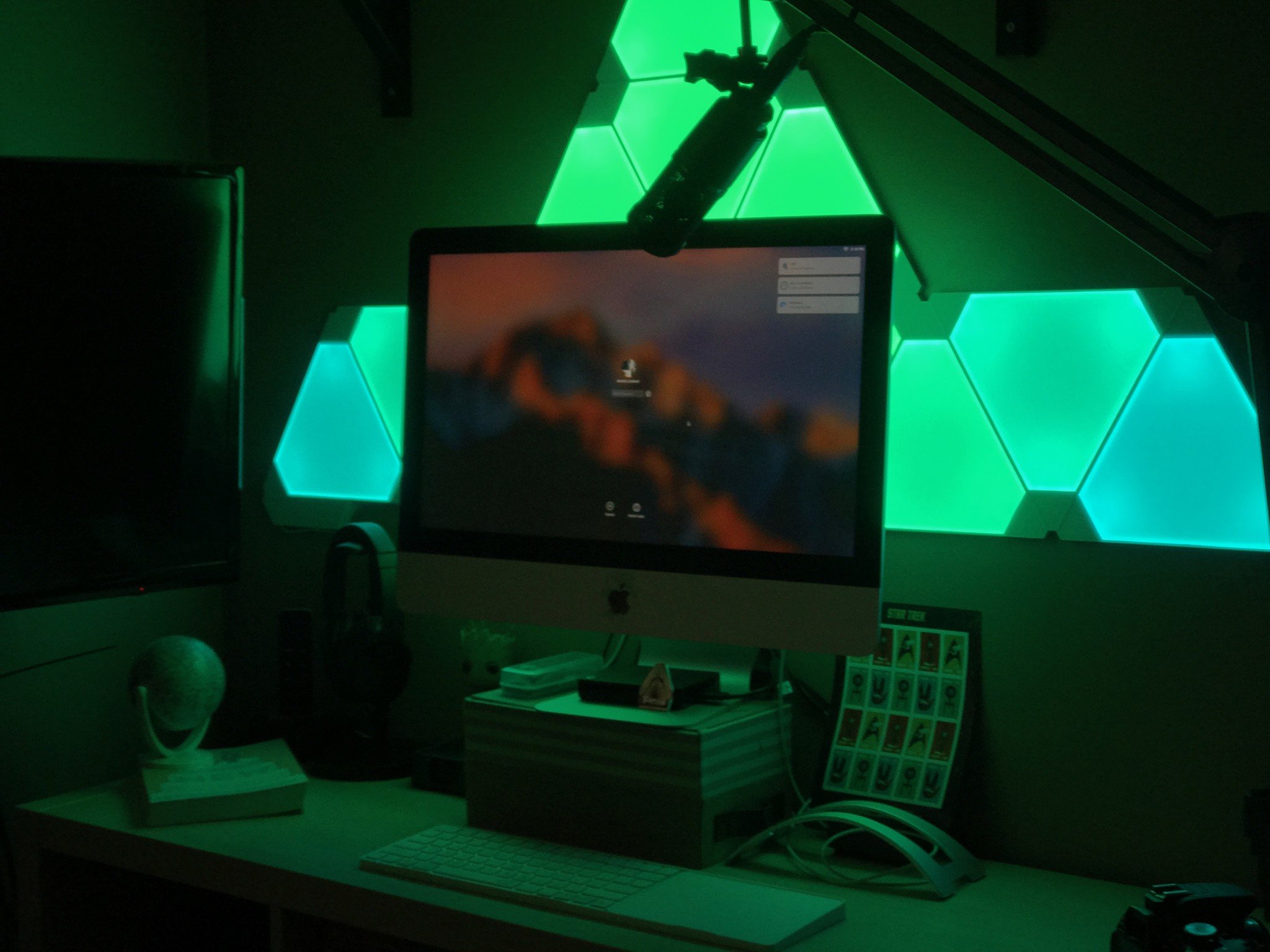
Over the past few years, I've become accustomed to all manner of strange home automation pitches: intelligent toasters, lights that double as speakers — if you can dream it, chances are I've gotten an email about it.
When I heard about Nanoleaf's Aurora smart LED lighting panels, my initial instinct was to put them in the "intelligent toaster" camp — cool, but why would anyone actually ever buy them?
Once I saw them in person, the answer became very quickly clear: because they are not just "oh, that's a fun idea" cool. They are cool. They are the type of object you can mount anywhere in a room and instantly have a 10-minute conversation about them. In short, the Aurora is a piece of art. In fact, it may be the first mainstream HomeKit-powered art installation.
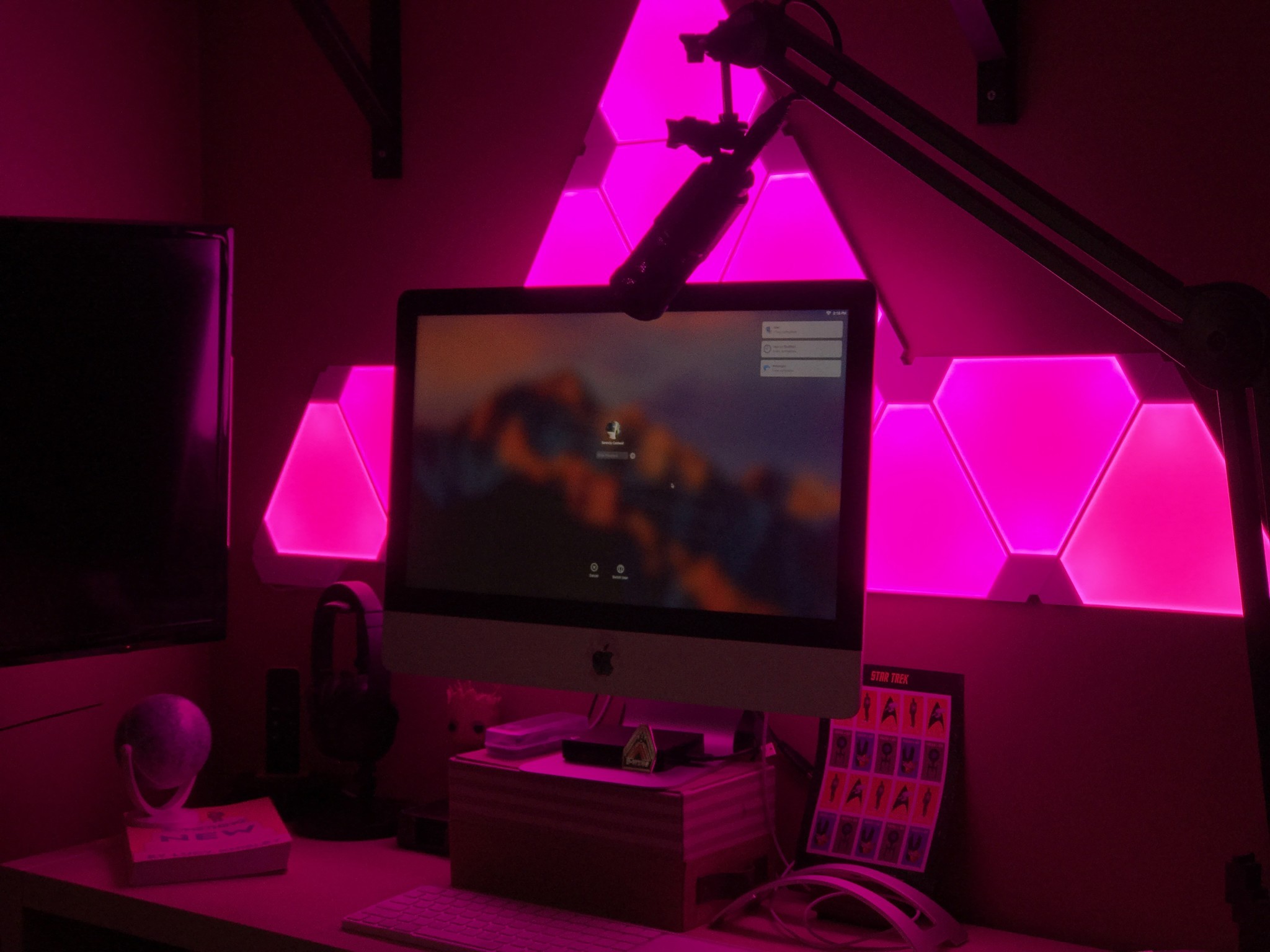
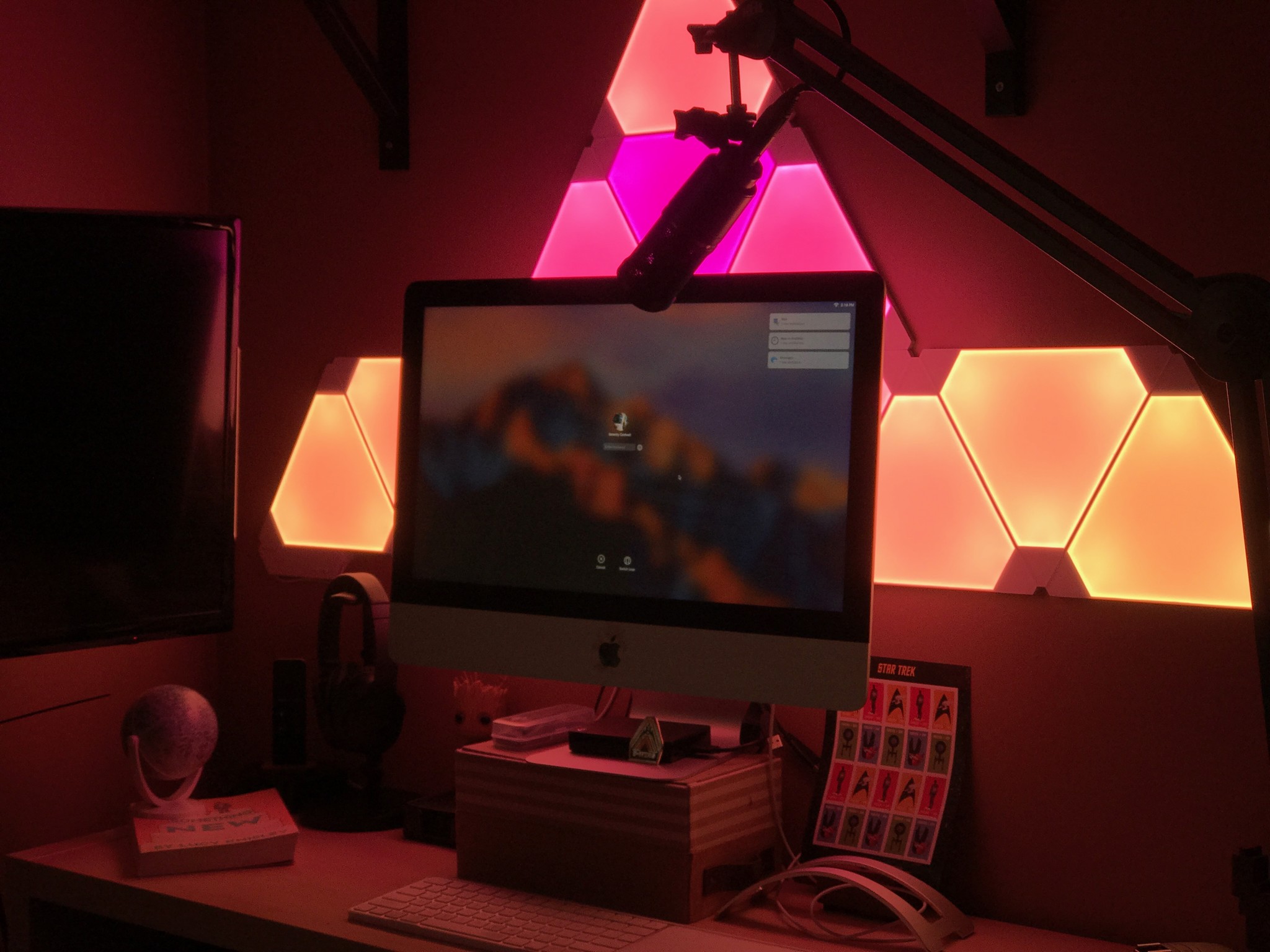
Now, before the artists on the internet rise up in outrage, I will freely admit that there's a difference between buying a neon "BEER" sign at Target and picking up an original piece at a gallery. I'm not saying that the Aurora should supplant the purchase of original art in your home or that HomeKit art is the only kind of art you should buy. But here's a nugget to chew on, friends: something can be art without being your kind of art. And that's okay.
Installing creativity
Unlike your average colored light, the $200 Aurora kit isn't a bulb, nor is it on a stand or propped up in a vase. It's a series of wall-mounted triangular panels that can be snapped together in any possible geometric configuration depending on the number of panels and connectors you have available to you.
The review unit I was supplied with had nine triangular panels in the box, with an additional three panels as part of an extension kit. The instructional guide offers some suggested configurations based on the number of available panels, but if you want to, you can go completely off the grid and design to your heart's content. (You can also browse some of Nanoleaf's past designs on its website or Instagram, too.)
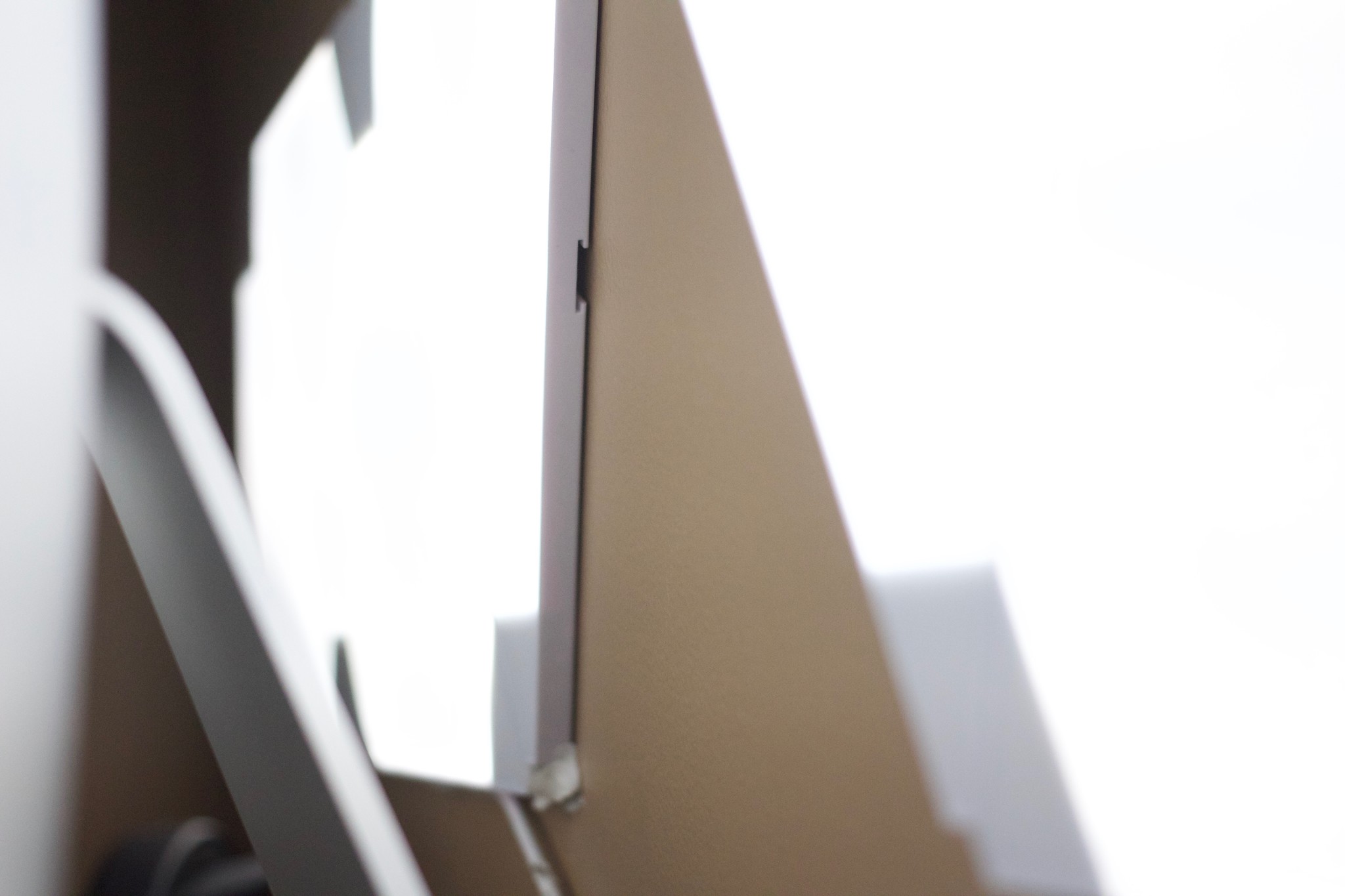
Instantly, this gives the Aurora a different feel from your typical box-store-art piece. You and every one of your friends could go and buy an Aurora starter kit tomorrow, but chances are slim that you'd all choose to design your panels the same way or hang them in the same room or even in the same orientation.
In part, that's because of how easy Nanoleaf has made putting an Aurora kit together. You need only a single wire and base to power your kit, and your first panel snaps in via a "flex linker" — a tiny connective plug. Subsequent panels have slots on all of their sides for flex linkers, allowing you to angle and twist your Aurora in any geometric direction you can imagine. You do have to connect one panel to the next one to keep the power chain going, however; if you want to separate your design, you'll need an additional base and panels kit.
The panels and base mount to the wall with 3M tape, and the flex linkers eliminate any need for excess wires or battery storage. As such, the Aurora panels are surprisingly slim against the wall and can fit behind all sorts of furniture. And while there are buttons to turn the Aurora on or off on the base mount or cycle through different lighting patterns, you can also do all of that through the app and HomeKit once you set everything up.
Augmenting and adding
Phillips Hue took the home automation world by storm with easy-to-install bulbs that could change color with the tap of a finger or, later on, simple voice commands. Heck, they could even sync up to certain movies. They get huge credit for that, and I have a ton of them in my home.
But the thing with the Hue bulbs is that they're almost all installed in everyday lights. I shift my yellows and blues throughout the day, yes, and my lightstrips and Blooms occasionally rock unusual colors in my living room, but by and large, my Hue setup is pedestrian. I don't take advantage of all the awesome features of these lights, largely because I'm busy using them to, y'know, illuminate my home.
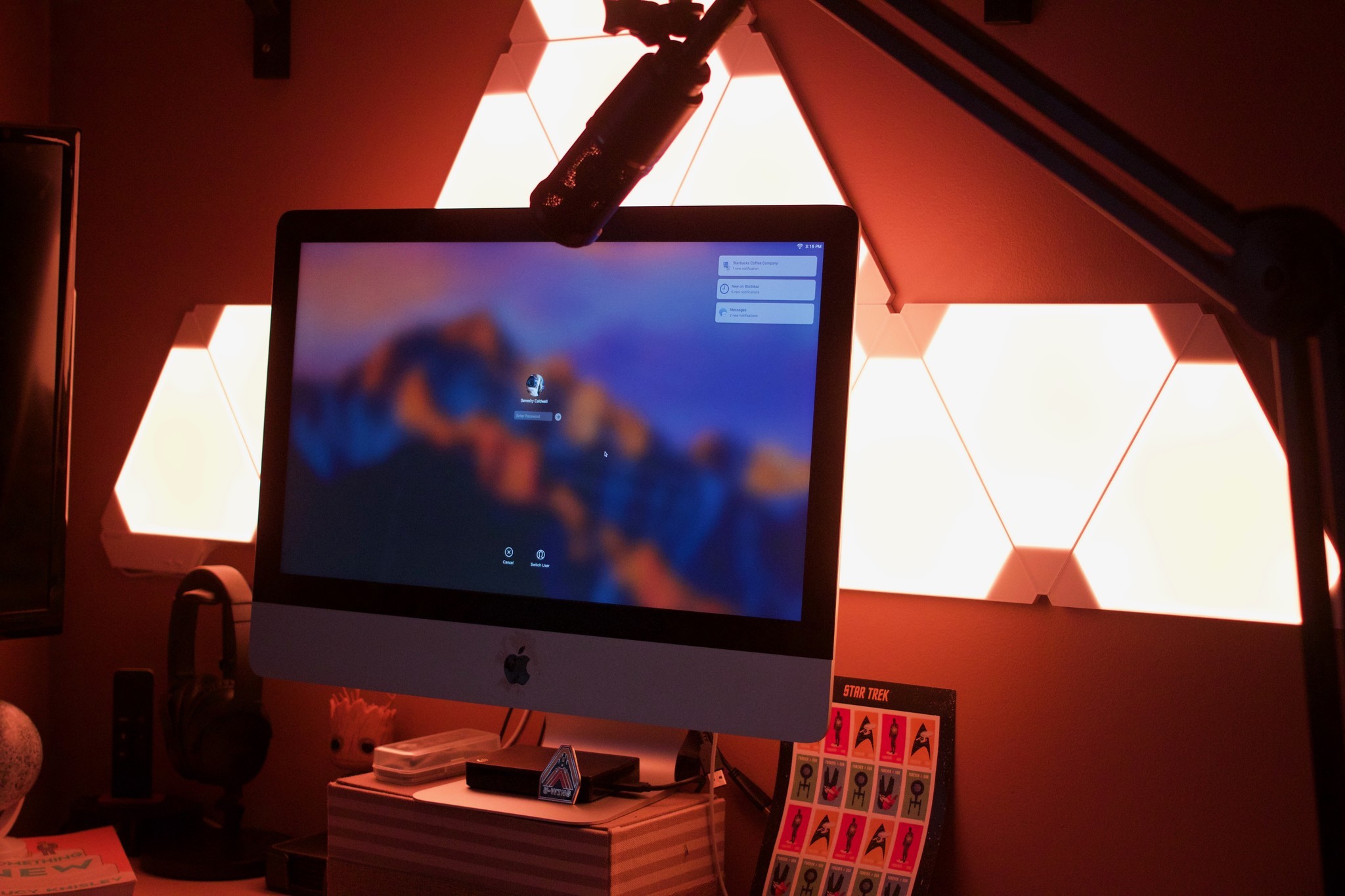
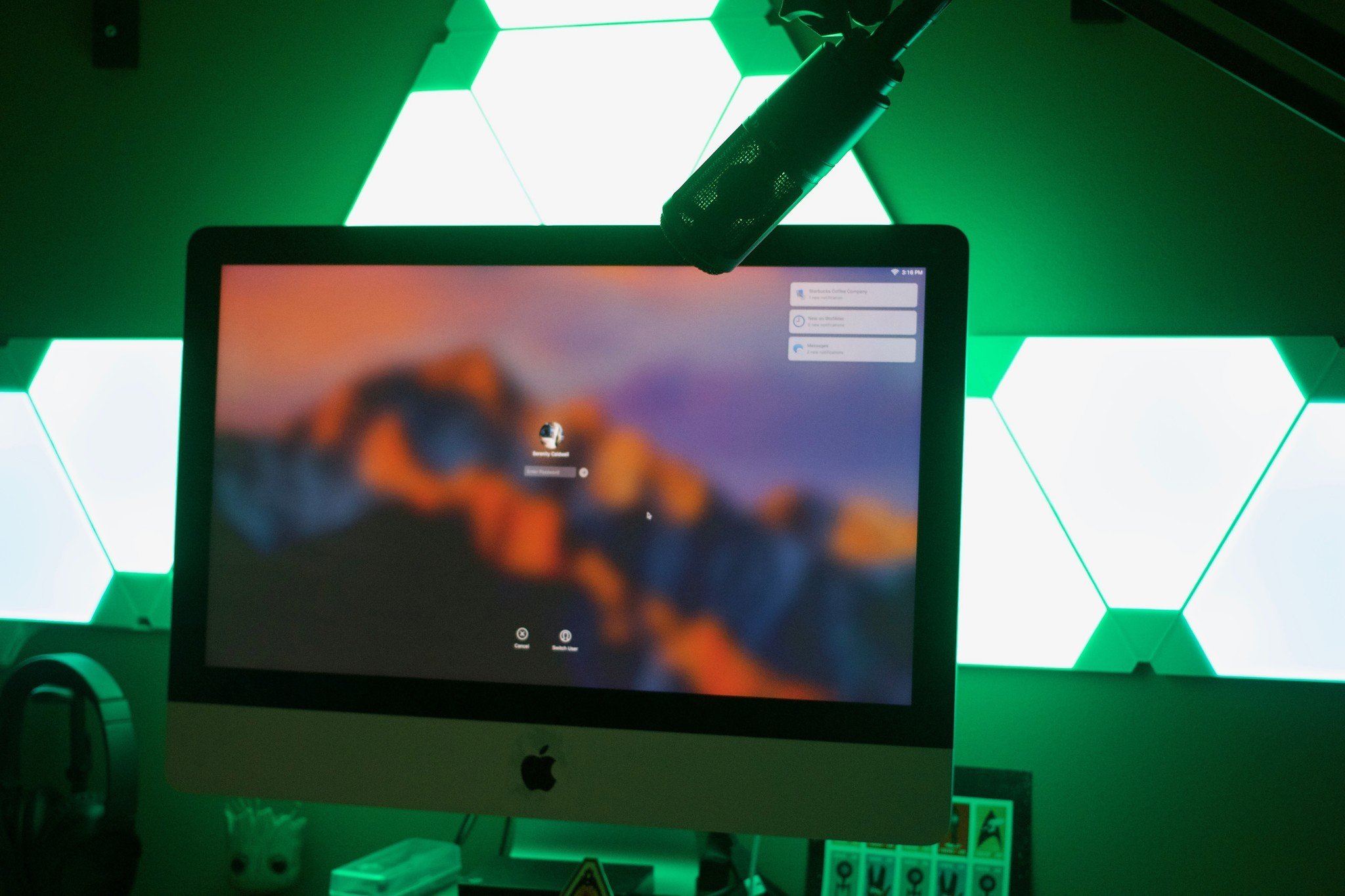
In contrast, the Aurora is designed from the start to showcase colored light on your walls. When you set up your lighting system inside the Nanoleaf app, you'll see a preview of your geometric pattern, rotated appropriately based your orientation. Once you've set that up, the app will walk you through changing individual panel lights, patterns, and themes. Spoiler: It makes the Hue app feel like a child's toy.
Thought-provoking
The Aurora app offers a ridiculous amount of customization and control. Not only can you set each panel individually if you want to drill down that far, but you can also pick base colors and create patterned effects, vary the brightness and speed, choose whether transitions have smooth fades or go panel by panel, and a whole lot more.
It's a lot to take in, and I'll admit, I made just a couple presets for my office and relied on many of the Aurora's defaults for the rest. But I love how much you can control if you so choose. It's why museums are using the Aurora for lighting displays right alongside folks decorating their offices.
But whether you choose to spend hours in the app customizing your Aurora setup or just running with some of the default light patterns, you'll be inundated with a beautiful light display. When it's on, I rarely set my Aurora unit to white light unless I'm using it as a splash light for video podcasts (which, by the way, is a fantastic secret use for these panels).
At all other moments, I have it set it on a slow fading "wave" cycle through a multitude of different saved color palettes while I work on my couch; it's a surprisingly soothing addition to my home office and has given me more reason than not to work from there most days.
Bottom line
There are a lot of reasons to pick up an Aurora: ease of installation and use, it's an interesting conversation piece, it provides instantly cool lighting for an area. But what I appreciate most about Aurora, when it comes right down to it, is how it embraces HomeKit and home automation tech to give people a wonderful experience.
Not only do I work more effectively around the Aurora, but it actively adds to the atmosphere of the room even when I'm not working. I've had invaluable brainstorming sessions just while watching the LED panels slowly shift from ocean blues to bright fall reds.
It's not going to replace a nature walk or admiring a wonderfully original work in a gallery, and it shouldn't.
But Nanoleaf has pulled off an incredibly difficult task in this modern world of ours: Create technology that offers true, beautiful experiences — just for the sake of that experience — and at a price that won't destroy anyone's wallet. It's special, and to me: It's art.
Serenity was formerly the Managing Editor at iMore, and now works for Apple. She's been talking, writing about, and tinkering with Apple products since she was old enough to double-click. In her spare time, she sketches, sings, and in her secret superhero life, plays roller derby. Follow her on Twitter @settern.


